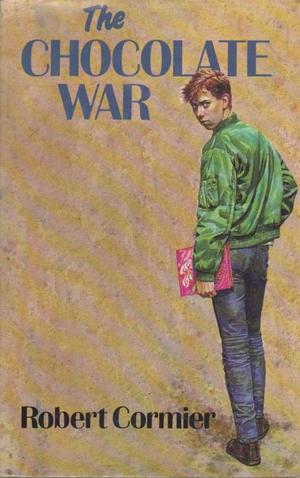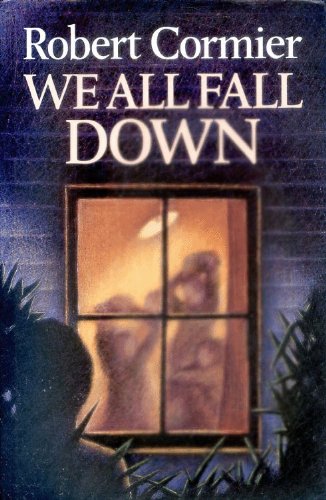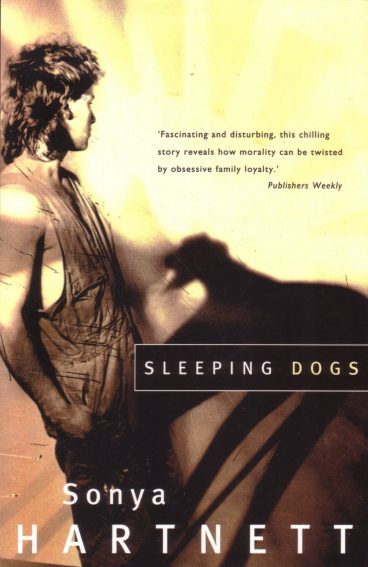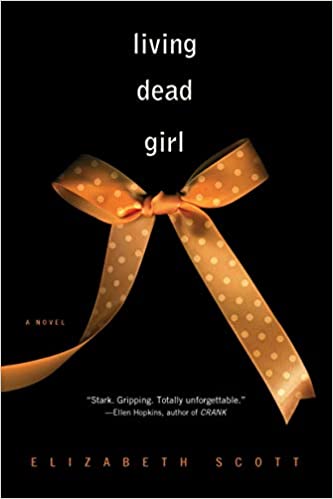Fact: the most widely “challenged” (read: banned) books in the U.S. are young adult novels. Just check out the latest edition of the American Library Association’s “100 Most Frequently Challenged Books” listing, in which YA stalwarts like BRIDGE TO TERABITHIA and the HARRY POTTER series far outrank controversial grown-up books like SLAUGHTERHOUSE-FIVE, ONE FLEW OVER THE CUCKOO’S NEST and even THE JOY OF GAY SEX. Certainly much of the ire surrounding YA fiction can be ascribed to puritanical overreaction (I contend that reading HARRY POTTER will not consign your soul to Hell), yet there are some genuinely subversive YA books. For a prime example, see ALA listing’s #3 entry: THE CHOCOLATE WAR by the late Robert Cormier.
 The enormously talented Mr. Cormier began his career in grown-up fiction, but it was with THE CHOCOLATE WAR that he really hit his stride. It established what was to become his signature theme, of an innocent finding himself at odds with a harsh and unforgiving universe, in this case a lonely teen whose misguided attempt at rebelling against the corrupt order of a Catholic boarding school leaves him open to violence and intimidation. A definite anomaly in the largely puerile world of YA books, I’d argue that THE CHOCOLATE WAR gave young adult literature an orientation it didn’t previously possess.
The enormously talented Mr. Cormier began his career in grown-up fiction, but it was with THE CHOCOLATE WAR that he really hit his stride. It established what was to become his signature theme, of an innocent finding himself at odds with a harsh and unforgiving universe, in this case a lonely teen whose misguided attempt at rebelling against the corrupt order of a Catholic boarding school leaves him open to violence and intimidation. A definite anomaly in the largely puerile world of YA books, I’d argue that THE CHOCOLATE WAR gave young adult literature an orientation it didn’t previously possess.
YA fiction, let’s not forget, was in its early years at the time of THE CHOCOLATE WAR’S 1974 publication (S.E. Hinton’s THE OUTSIDERS, published in 1967, is generally credited with initiating YA literature), and its salty language and uncompromising bleakness were unprecedented for the time. More importantly, the novel had a verve that rivaled that of most adult fiction.
The same can be said of Cormier’s 1977 follow-up I AM THE CHEESE, whose superbly trippy narrative begins with the first person account of a boy on a bike trip. The prose has a hallucinatory clarity, with the kid gradually discovering that the world he thought he knew doesn’t seem to exist. Concurrent with this are cryptic interrogations about the boy’s dimly recalled past; as unpleasant memories trickle back he finds himself reliving several painful events, such as the discovery that his parents were on the run from government-appointed assassins and that the life the boy thought he knew, and indeed even his name and birth date, are fabrications.
The highly elusive two-pronged narrative probably shouldn’t work, but somehow does. Yet it’s the overpowering bleakness of the enterprise, and also the Philip K. Dick-like sense of psychological displacement, that linger. (Incidentally, Cormier prepared an answer sheet to explain the story to young audiences, and also famously gave out his home phone number in the pages of I AM THE CHEESE.)
Cormier’s subsequent output, unfortunately, was quite erratic. THE BUMBLEBEE FLIES ANYWAY, BEYOND THE CHOCOLATE WAR and IN THE MIDDLE OF THE NIGHT woefully failed to match the charge of their predecessors, while TUNES FOR BEARS TO DANCE TO and TENDERNESS were (at best) only partially successful. But then there was 1991’s WE ALL FALL DOWN, which brought back the fire of the earlier books.
Like THE CHOCOLATE WAR, WE ALL FALL DOWN has a high ranking on the abovementioned ALA listing, due, most likely, to the stunningly bleak,  violent content. The subject is a house-trashing carried out by a band of adolescent hooligans, during which the young Karen is assaulted and rendered comatose. The melee is witnessed by “The Avenger,” a local psychopath whose identity is kept secret (although it’s very clearly implied) until the final chapters. The Avenger is besotted with Karen’s sister Jane, who wasn’t present during the trashing but is suffused with guilt over it. Matters are complicated considerably when Jane falls for Buddy, a young man who unbeknownst to her participated in the trashing—a development that doesn’t please the Avenger at all.
violent content. The subject is a house-trashing carried out by a band of adolescent hooligans, during which the young Karen is assaulted and rendered comatose. The melee is witnessed by “The Avenger,” a local psychopath whose identity is kept secret (although it’s very clearly implied) until the final chapters. The Avenger is besotted with Karen’s sister Jane, who wasn’t present during the trashing but is suffused with guilt over it. Matters are complicated considerably when Jane falls for Buddy, a young man who unbeknownst to her participated in the trashing—a development that doesn’t please the Avenger at all.
Cormier keeps the suspense at full boil throughout, with an emphasis on characterization that never compromises the forward momentum. The narrative admittedly becomes bogged down a bit during the burgeoning mid-book romance between Jane and Buddy, but gets back on track in a major way in the final chapters, which conclude in an appropriately unhappy fashion.
Any discussion of Robert Cormier’s fiction brings up overall the properties of young adult writing, and how it overlaps with grown-up fiction. Few real demarcations between the two forms appear to exist, as exemplified by the fact that at least two of Cormier’s “young adult” novels, 1979’s AFTER THE FIRST DEATH and 1988’s FADE, were initially issued as grown-up fiction but later reclassified (a distinction they share with LORD OF THE FLIES and THE CATCHER IN THE RYE).
It’s an unfortunate fact that young adult fiction tends to be crippled by laziness on the part of its authors. Sloppy prose, clichéd subject matter, underdeveloped narratives and ham-fisted moralizing all tend to run riot in the YA sphere, things that would never pass muster with publishers of adult fiction. That’s evident in the flood of YA novels that appeared in the wake of the HARRY POTTER craze, written by the likes of Clive Barker, Elmore Leonard, Jeffrey Thomas and others, with results that are negligible at best. There’s also the fact that far too many YA books read like reduced variants on well received adult novels, such as the HUNGER GAMES trilogy (a.k.a. BATTLE ROYALE lite), FREAKS: ALIVE ON THE INSIDE (a.k.a. GEEK LOVE lite) and MIDWINTERBLOOD (a.k.a. CLOUD ATLAS lite).
So with that in mind, are there any non-Robert Cormier young adult novels that are genuinely worthy (and of interest to readers of this site)? Thankfully yes, there are, including…
1975’s Z FOR ZACHARIAH by Robert C. O’Brien prefigures Cormac McCarthy’s THE ROAD in its pitiless portrayal of a post-apocalyptic wasteland. 16-year-old Ann, who narrates in the form of diary entries, lives alone in a rural valley. Her life experience is so limited she can’t fathom how Mr. Loomis, an initially convivial scientist who joins her in her valley retreat, can so quickly turn into the controlling would-be rapist he becomes. Ann learns her lesson, however, in the lethally suspenseful climax.
As an exercise in contained minimalism Z FOR ZACHARIAH is nearly in a class by itself. The prose is unerringly spare and intense, and Ann’s  quaintly naïve voice is quite convincing. Mr. Loomis is likewise an extremely well-rounded character, even if he does share some annoying traits common to genre novel bad guys (such as monotone speech patterns and the inability to conjugate his words). Then there’s the rushed and unsatisfying ending, a result of the author dying before the novel was complete.
quaintly naïve voice is quite convincing. Mr. Loomis is likewise an extremely well-rounded character, even if he does share some annoying traits common to genre novel bad guys (such as monotone speech patterns and the inability to conjugate his words). Then there’s the rushed and unsatisfying ending, a result of the author dying before the novel was complete.
One YA novel that came close to matching Robert Cormier’s work was the blistering Russian import SCARECROW by the late Vladimir Zheleznikov (initially published in 1983, with the English translation appearing in 1990). It can be viewed as Russia’s answer to THE CHOCOLATE WAR, albeit with a highly baroque, genre-hopping style that freely incorporates horrific and surreal elements.
It’s an account of pre-teen bullying in a small Russian village, with the target being a lanky girl her classmates call Scarecrow. The kids are upset with her for allegedly ratting them out to their teacher after they skip class, which gets them barred from a field trip. The torment, overseen by a girl who’s aptly nicknamed Iron Tack, continues over the course of the following day, and reaches its apex in a truly delirious passage in which her schoolmates burn a mock-up of Scarecrow at the stake.
The story this book tells is a powerful one (as proven by the shattering 1983 film adapted from it), but the prose is curiously flat. I’m guessing the fault is with a shoddy translation. The author, at least, seems quite enthusiastic about his novel being translated into English, as evinced by his ecstatic introduction in which he (following Robert Cormier’s lead) gives out his home address!
1985’s WOLF OF SHADOWS by Whitley Strieber was a YA follow-up to Strieber’s epic nuclear war themed adult novel WAR DAY. I say the kids got the better deal, as WOLF OF SHADOWS packs more suspense, intelligence and sheer horror into its 104 pages than the bloated and self-important WAR DAY managed in three times the length.
WOLF OF SHADOWS relates what occurs when the United States is obliterated by nuclear missiles, as witnessed by a wolf pack based in the Minnesota wilderness. Also afoot are a woman and her young daughter, looking to escape the nuclear fallout suffusing the cities. These two are first glimpsed with the charred body of the woman’s infant child, which turns out to be the first of many horrors precipitated by an unfolding nuclear winter. Countless more corpses are found, many with knives sticking out of their chests and ropes around their necks, along with various animals the ravenous wolf pack kills in a succession of graphically described gorings (“his tongue could detect a huge, throbbing vein…With a toss of his head he  cut it completely in two…Blood poured from the wound, hissing in the hot hay“). The two humans, in the novel’s most audacious development, eventually become part of the pack, leading to a finale that can be viewed as hopeful but seemed inescapably bleak to me.
cut it completely in two…Blood poured from the wound, hissing in the hot hay“). The two humans, in the novel’s most audacious development, eventually become part of the pack, leading to a finale that can be viewed as hopeful but seemed inescapably bleak to me.
If there exists a more rancid depiction of rural Australia than that described in SLEEPING DOGS by Sonya Hartnett I have yet to experience it. This 1995 publication can be viewed as a young adult take on the infamously gritty Aussie-centric novels of Kenneth Cook in its pitiless evocation of a depraved white trash clan. Opening with a graphic description of a sheep getting disemboweled, the novel immerses us in lives of the Willows, who live in a filthy garbage-ridden farm and preside over an equally grungy RV park. In this squalid milieu violence, sexual exploitation and incest are the norm. When an overly inquisitive painter settles into the RV park the family dynamic is threatened, leading the Willows to adopt desperate measures; every Christmas, you see, the Willows stage a large-scale hunt through the wilderness surrounding their property, and this Christmas the hated painter would appear to make for ideal prey.
Yes, this novel’s arc is bloody and cutthroat, but what ultimately resonates is the atmosphere of unremitting ugliness and degeneration conjured by author Sonya Hartnett. Her prose is admittedly a bit dense for my tastes, requiring close attention on the part of the reader (SLEEPING DOGS is about as close as YA fiction comes to literary), but I can’t fault Hartnett’s storytelling flair, which is macabre and excessive yet also unnervingly true to life.
2006’s DO THE CREEPY THING (or as it’s known in America, THE EXCHANGE) was a rare example of an author, in this case the prolific English horror/fantasy novelist Graham Joyce, turning out something of genuine relevance amid the HARRY POTTER YA book glut. The novel, in fact, is fully up to the high standards of Joyce’s grown-up books, graced as it is with superbly lyrical prose and storytelling ingenuity.
The subject is Caz, a normal teenager with a wild streak that manifests itself in the “Creepy Thing,” a game of sorts that involves breaking into peoples’ homes in the middle of the night and standing over them as they sleep. That this is a bad idea goes without saying, although the instrument of Caz’s comeuppance is a most unexpected one: a curse bequeathed by a bitter old woman who awakens during the process and slaps a bracelet on Caz’s wrist. The bracelet falls off but leaves in its place a tattoo, a development that amply demonstrates Joyce’s unmatched talent for blending the real and the fantastic: Caz’s bracelet tattoo is obviously a flight of fancy, as are the extra-sensory powers it bequeaths, but the details of her attempts at getting rid of the thing are far from fanciful. The story’s ultimate arc provides further evidence of Graham Joyce’s brilliance in its drift from horror toward a sense of acceptance on the part of its steadily maturing heroine, who learns to use her supernatural powers to her advantage.
With 2002’s CORALINE, the first YA novel by comic book legend Neil Gaiman, we have an example of something that’s all-but unheard of: a novel whose content is actually enhanced by the YA format. I’m referring to the writing, which is pointed and unadorned in the manner of many young adult books, which has the effect of increasing the horrific weirdness of the story.
Coraline is a young girl who discovers a suspicious door in the strange new home she’s just moved into. Coraline opens the door one day to find a tunnel that takes her into a house that looks just like hers. This place has pictures that move and a mother and father who strongly resemble Coraline’s real mom and dad, but for the fact that they have button eyes. They want nothing more than for Coraline to join them in this scary alternate world by sewing buttons onto her peepers. This leads to a nightmarish odyssey that has Coraline’s actual parents snatched from the real world and  enclosed inside a snow globe…
enclosed inside a snow globe…
CORALINE is an authentically surreal tale in the manner of classics like ALICE IN WONDERLAND and the 19th Century “dream romances” of George MacDonald, yet also one that deals with genuine childhood fears of loneliness and abandonment in a startlingly blunt manner.
Finally we have 2008’s LIVING DEAD GIRL by Elizabeth Scott, another novel enhanced by the YA treatment. It’s about a teen girl held captive by a pervert named Ray, who monitors her every move while subjecting her to all manner of sexual exploitation. Related in effectively spare, hyperbole-free prose, it’s a grueling read that effectively communicates the overpowering hopelessness and despair gripping the heroine, whose overall motto is laid out in three “Life Lessons”: “1. No one will see you. 2. No one will say anything. 3. No one will save you.”
The story begins five years into the girl’s ordeal, when Ray orders her to find and groom another potential victim. Her feelings about the assignment are extremely complicated—she isn’t terribly sympathetic toward her intended prey—which is fully in keeping with the overall tone. It’s in this manner that the YA tag works to LIVING DEAD GIRL’S benefit: were this a grown-up novel it would likely be burdened with a gratuitous romance (to appeal to the housewives who drive the fiction market) and a lot of miscellaneous supporting characters (to help pad it to “marketable,” i.e. 350-plus page, length). Thankfully that’s not the case.
Of course, over all these novels hangs a crucial question: are they truly suitable for the juvenile audiences at which they’re aimed? “Unsuited to age group” is the most commonly given reason for the “challenges” cited in the abovementioned ALA listing, and regarding the novels summarized above, the challengers may well have a point. But then such things don’t really matter much here, as my recommendations in all cases are due to the fact that these are kid books that can also, and perhaps especially, be appreciated by adults.
